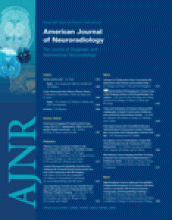J.R. Petrella and P.M. Doraiswamy, guest eds. Philadelphia: WB Saunders; 2005. 168 pages, $54.50.
Given an increase in longevity in almost all populations and a consequent rise in the prevalence of dementia, neuroradiologic expertise in carrying out and interpreting studies in dementing illness is ever more critical to the public good. Not only can well-designed investigations exploiting new technologies help researchers to better identify pathophysiologic processes in dementia, but thoughtful neuroradiologic evaluations by using conventional equipment can help clinicians prevent patients with treatable dementia from being consigned to back wards of nursing homes.
As pointed out in the volume on Alzheimer disease (AD) edited for the Neuroimaging Clinics of North America by Patrella and Doraiswamy, AD represents 50%–80% of dementing illness. It is, in effect, the galaxy that we need to know best in the universe of dementias. It is the anchor for intergalactic travel in the differential diagnostic process. Patrella and Doraiswamy’s book is a succinct but richly endowed tour guide for embarking on this 21st century journey.
The volume contains 11 well-written chapters from 42 contributors in the United States and abroad who cover pertinent basic science, clinical, and imaging topics. Approximately one third of the contributors are radiologists/neuroradiologists; the remainder includes representatives from psychiatry/biologic psychiatry, pathology, neurology, and neurobiology/neuroscience. Six of the chapters primarily are from Duke University, 2 are from New York University, and 1 each is from the University of California, Texas Southwestern Medical School, and the University of Miami.
The chapters addressing basic science concepts present a nice overview of the genetics of AD and a discussion of the putative role of β-amyloid in its pathogenesis and are broad enough to include a brief, but relevant, review of evidence against the β-amyloid hypothesis. Good images and discussions of the pathology of AD are provided in the chapters on neuropathology and on quantitative structural imaging, respectively. The latter chapter includes correlative histologic and MR imaging specimens, which nicely lay out, in paired sets, the detailed relevant tissue and MR anatomy of the medial temporal lobe. Subsequent chapters cover the role/limitations of fluorine-18 fluorodeoxyglucose positron-emission tomography imaging in AD, the quest for molecular imaging of amyloid, and the current status of functional, perfusion-weighted, and diffusion-tensor MR imaging and of MR spectroscopy in the clinical diagnosis and prognosis of AD. These chapters bring the reader up to date on current technologic frontiers in AD.
Importantly, for the neuroradiologist, however, the volume does not neglect clinical aspects. Three valuable chapters, respectively, are devoted to the “Clinical Diagnosis and Management of Alzheimer Disease,” “A Clinical Perspective of Mild Cognitive Impairment,” and “The Role of Conventional MR and CT in the Work-Up of Dementia Patients.” These chapters include an appropriate emphasis on difficulties in diagnosis, on differential diagnosis, and on the known efficacy of current drug therapy.
It seems that the editors have undertaken a concerted effort to make the volume a useful, integrated whole, maximizing information while minimizing repetition and unnecessary complexity; the authors have tailored up-to-date information to the specific objectives of this book. They are all to be congratulated.
This volume will be a useful, manageable handbook on AD, in particular, and on dementia, in general, for years to come.

- Copyright © American Society of Neuroradiology












